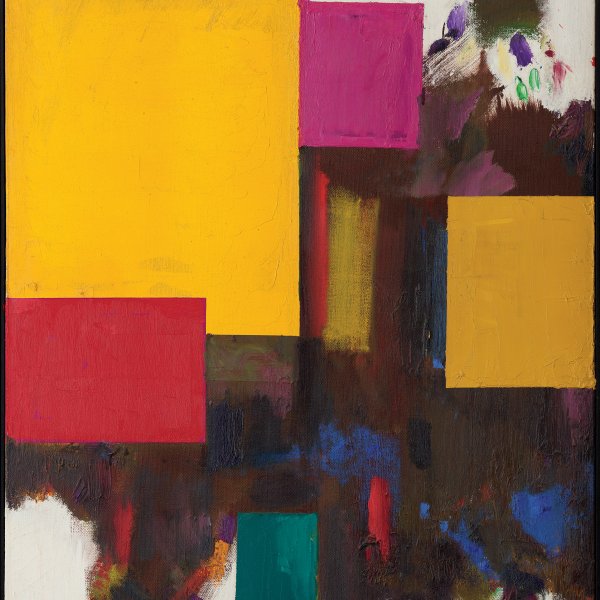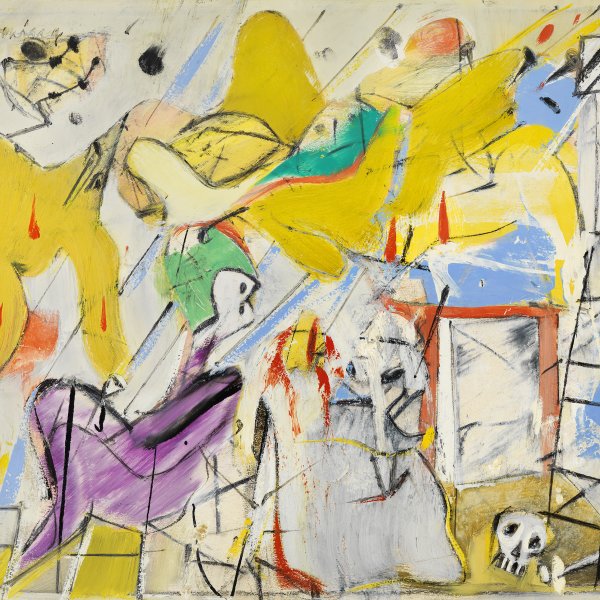Blue Enchantment
Although the German painter Hans Hofmann was over fifty years old when he burst onto the American art scene in 1932, he is regarded today as one of the foremost practitioners of American Abstraction. However, during his period in Paris from 1904 to 1914, the influence of the Fauves and Cubists left such a mark on him that Clement Greenberg stated that Hofmann was suffering from “Cubist trauma.”
At the end of the 1940s the artist began to develop a sort of biomorphic figuration that can still be seen in his works of the early 1950s, such as Blue Enchantment, executed in 1951. The present painting achieves the difficult balance between the legacy of Cubist spatial construction and Hofmann’s new interest in Surrealist automatism. The mark of Joan Miró is combined with certain references to Picasso at his most surreal — particularly The Studio, a large painting on canvas executed from 1927 to 1928, which Hofmann could have seen at The Museum of Modern Art in New York. It also displays certain purely pictorial values characteristic of the American school, particularly the blue background that gives its name to the painting. The application of saturated colour with vigorous sweeps of a palette knife in large fields of colour and certain areas of thick impasto creates a work far removed from any kind of evocative atmosphere. In Blue Enchantment Hofmann once again succeeds in harmoniously reconciling his European roots and background with the novelties of his American experience.
Paloma Alarcó









